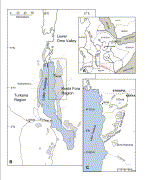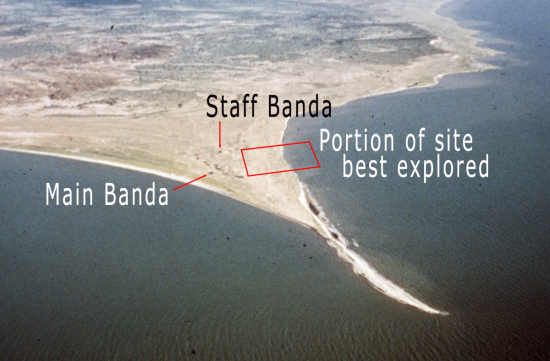Josephine C.A. Joordens, Guillaume Dupont-Nivet , Craig S. Feibel , Fred Spoor , Mark J. Sier , Jeroen H.J.L. van der Lubbe , Trine Kellberg Nielsen,Monika V. Knul , Gareth R. Davies , Hubert B. Vonhof
Journal of Human Evolution Volume 65, Issue 6, December 2013, Pages 731–745
Abstract
To address questions regarding the evolutionary origin, radiation and dispersal of the genus Homo, it is crucial to be able to place the occurrence of hominin fossils in a high-resolution chronological framework. The period around 2 Ma (millions of years ago) in eastern Africa is of particular interest as it is at this time that a more substantial fossil record of the genus Homo is first found. Here we combine magnetostratigraphy and strontium (Sr) isotope stratigraphy to improve age control on hominin-bearing upper Burgi (UBU) deposits in Areas 105 and 131 on the Karari Ridge in the eastern Turkana Basin (Kenya). We identify the base of the Olduvai subchron (bC2n) plus a short isolated interval of consistently normal polarity that we interpret to be the Pre-Olduvai event. Combined with precession-forced (∼20 kyr [thousands of years]) wet–dry climate cycles resolved by Sr isotope ratios, the magnetostratigraphic data allow us to construct an age model for the UBU deposits. We provide detailed age constraints for 15 hominin fossils from Area 131, showing that key specimens such as cranium KNM-ER 1470, partial face KNM-ER 62000 and mandibles KNM-ER 1482, KNM-ER 1801, and KNM-ER 1802 can be constrained between 1.945 ± 0.004 and 2.058 ± 0.034 Ma, and thus older than previously estimated. The new ages are consistent with a temporal overlap of two species of early Homo that can be distinguished by their facial morphology. Further, our results show that in this time interval, hominins occurred throughout the wet–dry climate cycles, supporting the hypothesis that the lacustrine Turkana Basin was a refugium during regionally dry periods. By establishing the observed first appearance datum of a marine-derived stingray in UBU deposits at 2.058 ± 0.034 Ma, we show that at this time the Turkana Basin was hydrographically connected to the Indian Ocean, facilitating dispersal of fauna between these areas. From a biogeographical perspective, we propose that the Indian Ocean coastal strip should be considered as a possible source area for one or more of the multiple Homo species in the Turkana Basin from over 2 Ma onwards.

Figure 1. A. Location of the Turkana Basin in northeastern Africa. In red: postulated route of the ‘Turkana River’ connecting Turkana Basin and Indian Ocean around ∼2 Ma (after Feibel, 1993). B. Present-day Lake Turkana with Pliocene and Pleistocene deposits indicated in grey. C. Location of a selection of the numbered paleontological collecting areas in the Koobi Fora region on the northeastern coast of Lake Turkana. Dotted lines indicate ephemeral rivers. (For interpretation of the references to colour in this figure legend, the reader is referred to the web version of this article.)
